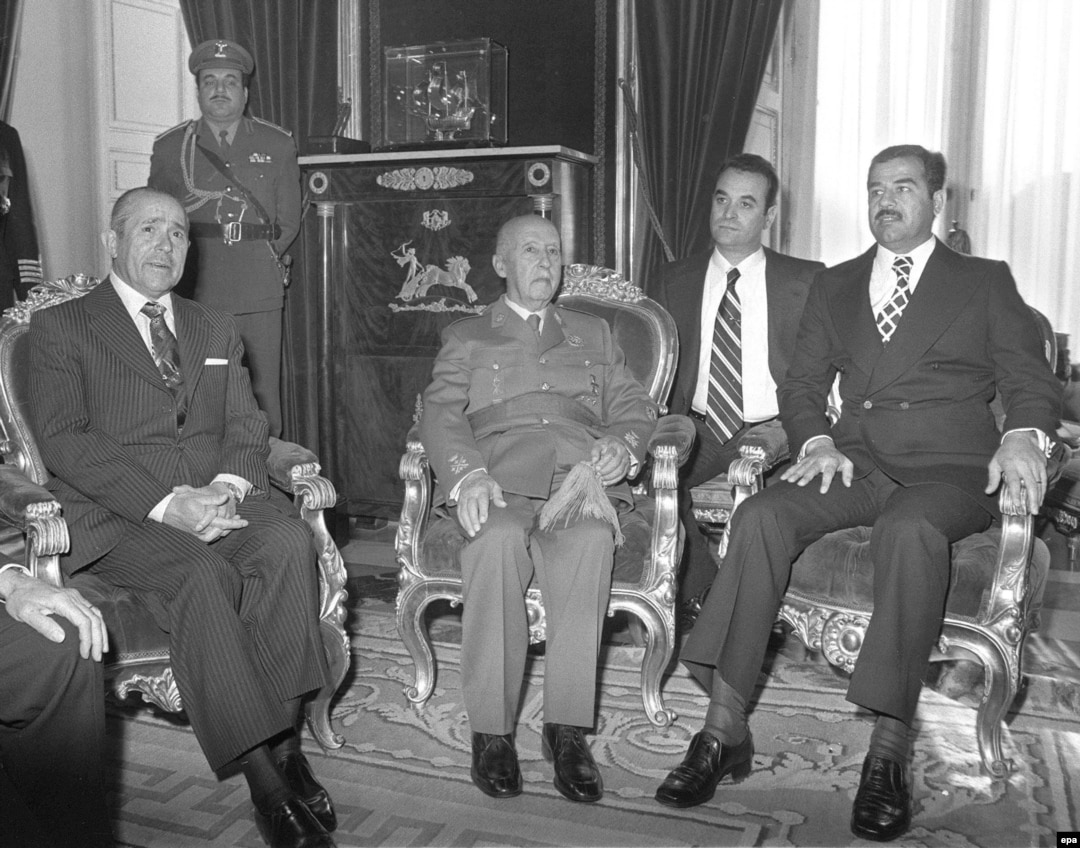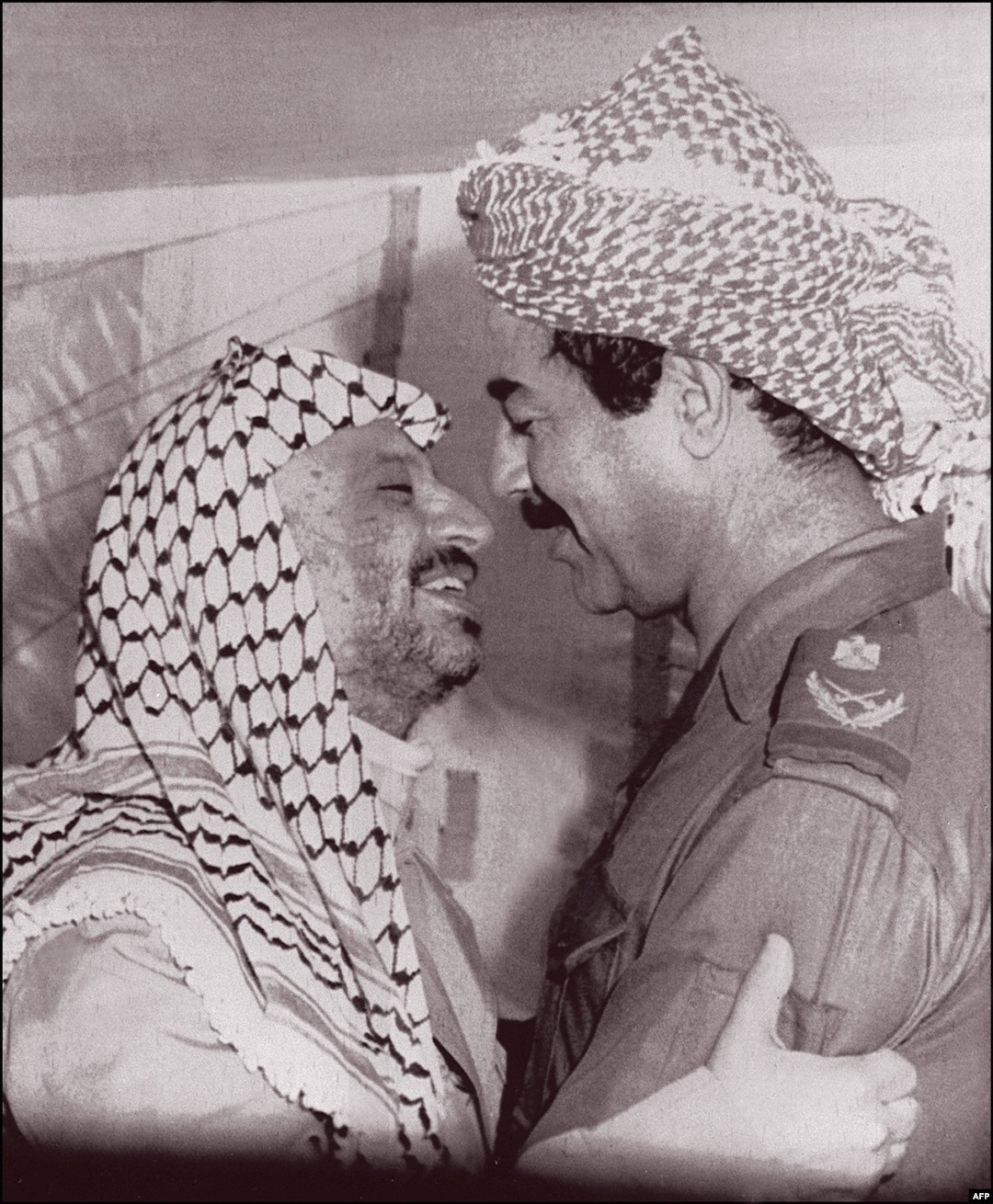Death Of A Dictator: 10 Years Since Saddam Hussein's Execution

The many faces of Saddam Hussein: from the late 1940s (bottom right) to his trial in 2006 (top left).

Saddam Hussein (right) as Iraqi vice president meeting Spanish dictator Francisco Franco (center) on December 10, 1974. During his climb to power, Hussein was invited as the guest of Spanish President Carlos Arias Navarro (left) at the Royal Palace of El Pardo in Madrid.

With Palestinian leader Yasser Arafat in 1980. Although Saddam Hussein was popular with some in the Arab world through the 1970s, Arafat would be one of the few global figures to support him during the first Gulf War in 1991.
Saddam Hussein at the front during the Iran-Iraq war. Iraq invaded Iran in 1980, leading to a conflict that lasted eight years and claimed 1.7 million lives.
Saddam Hussein in the mid-1990s, posing with an AK-47. After the Iran-Iraq War, his attention turned to oil-rich Kuwait, which he invaded in August 1990.
Saddam Hussein and his wife, Sajida, visit their son, Uday, after a failed assassination attempt on him in 1996. Uday was shot eight times which left him partially handicapped. Along with his brother, Qusay, he played a brutal role in the regime before being killed by U.S.-led forces in 2003.
A defiant Saddam Hussein appears on state television, three hours after the United States launched a war to overthrow him, on March 20, 2003.
U.S. Marines cross the border from Kuwait into Iraq on March 21, 2003.
People flee the burning city of Basra, in southern Iraq, on March 28, 2003.
An iconic moment seen on TV screens around the world: a statue of Saddam Hussein is toppled in central Baghdad, April 9, 2003.
The ace of spades. In 2003 Saddam Hussein was the top target in a deck of playing cards given to U.S. forces to help them identify him and other senior Iraqi officials after the invasion.
The capture of Saddam Hussein, December 13, 2003. U.S. forces found him living underground in a so-called "spider hole" with scant space and spartan facilities.
Saddam Hussein is led away in chains from a court hearing, July 2004. Iraqis pressed multiple charges against him, while Iran wanted him for crimes allegedly committed during the Iran-Iraq War.
Iraqis stamp on Saddam Hussein's photo at a Baghdad demonstration in July 2004. He retained some support among Iraq's Sunni minority, but most Iraqis celebrated his downfall and welcomed his trial.
Saddam Hussein being questioned in a Baghdad court in July 2005. His first trial was over the deaths of 148 people in the town of Al-Dujayl following a failed 1982 assassination attempt.
When the trial for crimes against humanity over the Al-Dujayl killings opened in Baghdad on October 19, 2006, Saddam Hussein refused to enter a plea, or recognize the authority of the court.
Saddam Hussein responds after receiving the death sentence in the Al-Dujayl trial, November 5, 2006. On December 26, an appeals court upheld the sentence.
Remains recovered from a mass grave in the Al-Samawa desert, 270 kilometers south of Baghdad, April 2005. Evidence from this discovery and others like it formed the basis of Saddam Hussein's second trial.
An Iraqi man reads the news on Saddam's trial and sentencing in Baghdad, after a court rejected his appeal, December 27, 2006. "God willing, Saddam will be hanged as soon as possible," one Baghdad man told Radio Free Iraq. The former Iraqi dictator was hanged three days later.
Saddam Hussein was executed by hanging on December 30, 2006. Video taken by Al-Iraqiya television showed the ousted Iraqi president moments before his death.

